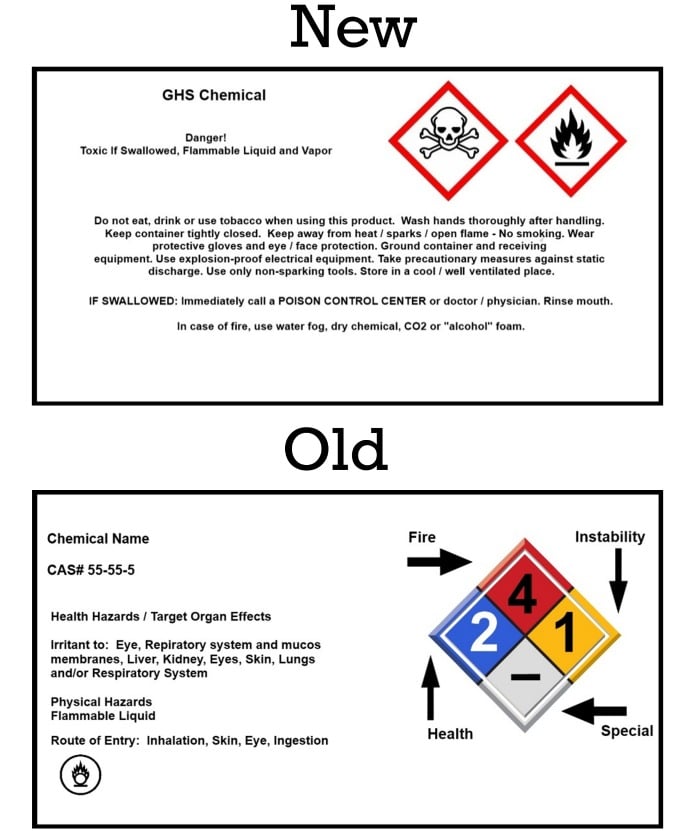KYLE MEINERT
Risk Advisor
Our recent webinar on the Globally Harmonized System of Classification and Labeling of Chemicals (aka GHS) gave employers a useful overview of what the new hazard communication rules are all about, as well as explaining the why of OSHA's decision to switch to this international program.
Following are a few key takeaways from the GHS training session:
1.) It's All About Clear Communication
The old material safety data sheets (MSDS) before GHS lacked consistency in format. Would you avoid touching di-hydrogen monoxide? Sounds scary, but it's actually water. To some employees, the words on an old MSDS could have been as unreadable as a foreign language! And if you can't understand, there's zero chance for maximum safety.
Under GHS, the new Safety Data Sheets will share a common approach that defines and classifies hazards to minimize confusion and misunderstanding. The result is that employees will be safer and will make good, safe decisions. In the U.S., chemicals are a $450 billion industry. Needless to say, there's a lot on the line when it comes to the shift to GHS.
2.) A Picture's Worth a Thousand Words
One of the biggest changes brought about by GHS is the use of pictograms, making hazards easier to recognize. For instance, everyone knows they should be worried when they see a skull and crossbones. That's important, because this illustration in the world of GHS labeling represents acute toxicity, fatal or toxic. Yikes!
Here's a closer look at the new (GHS) and old labeling systems. You can tell right away, thanks to the pictures, that the chemical is toxic and flammable (see below).

Here's another GHS training tip: The labels are required to have signal words. If you see "warning," the chemical has the potential to cause injury. If you see "danger," the chemical has the potential to cause death.
3.) Fall in Line with the New (SDS) Order
The old MSDS didn't have a mandated order for information. The new guideline for SDS now calls for info sections to appear in this particular order:
1.) Identification
2.) Hazard(s) Identification
3.) Composition/Information on Ingredients
4.) First Aid Measures
5.) Fire-Fighting Measures
6.) Accidental Release Measures
7.) Handling and Storage
8.) Exposure Controls/Personal Protection
9.) Physical and Chemical Properties
10.) Stability and Reactivity
11.) Toxicological Information
There are 16 sections in total; the final five apply more to U.S. Department of Transportation regulations (vs. OSHA).
The standardized order is especially important in an emergency situation. Employees know exactly where to find information on PPE, first aid, storage, etc., instead of having to search through a document when time is of the essence.
4.) Get Your GHS Training Done (If You Haven't Already)
The deadline for employee GHS training on labels and SDS was Dec. 1, 2013. But when we're out in the field,we're finding many people aren't familiar with GHS. This is a problem, because OSHA is inspecting for GHS compliance.
So what happens at an inspection? Often employee knowledge is put to the test. They're asked about their awareness of GHS and quizzed on employer program specifics. They're asked, "Do you guys have a program?" With hope, everyone says yes. If employees don't have all the answers, they need to demonstrate that they know where to go to get the specifics.
GHS is Sleep Insurance for Employers
Think about the "harmonized" part of GHS. Harmony is smooth — everything working together. Under the new GHS, all types of chemical hazards will be communicated in a consistent way. Really, GHS is a sleep insurance program for employers, because employees will be absolutely clear on how to handle this risk.
If you couldn't join us for the webinar, please click the button below to access a recording and slide deck. There's a lot of critical information for employers from the session, including a list of GHS deadlines!
What other questions do you have about GHS? How comfortable are your employees with the new hazcom standards? Please sound off below in comments!
Related Posts:
The Safety G A P: Is Anything Falling Through the Cracks?
Safety Habit Could Change Industry... and Your Life
New OSHA Hazard Communication Regs [What Employers Need to Know]
.png?width=69&height=53&name=Acrisure%20Logo%20(White%20Horizontal).png)


